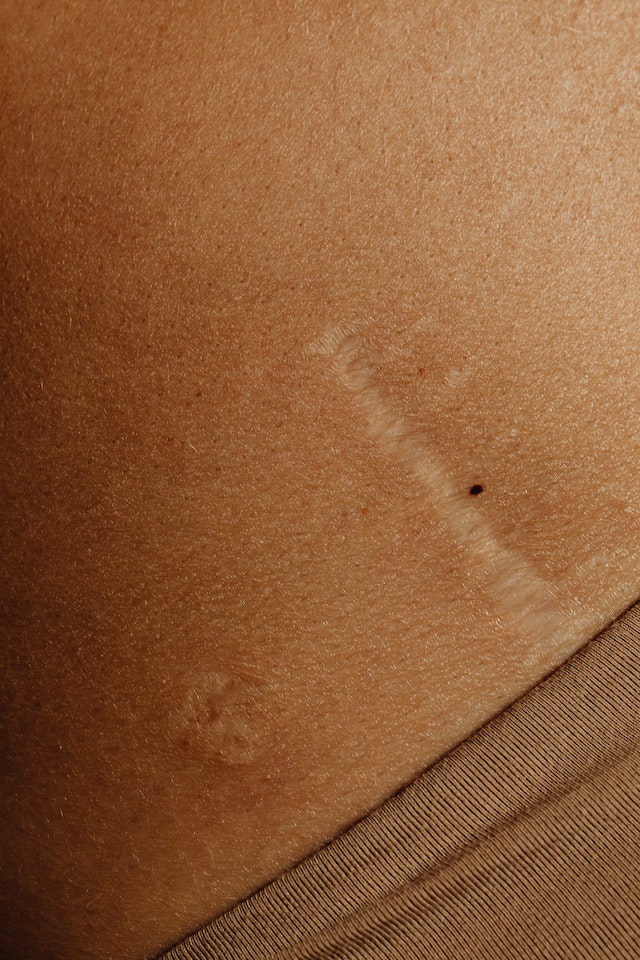Dealing with sciatica pain but don't know which massager to go for?
Sciatica pain can be a difficult and debilitating condition to live with. This condition is caused by a compression of the sciatic nerve, which runs from the lower back down through the buttocks and legs.
When left untreated, sciatica pain can worsen and become more difficult to manage.
With chronic symptoms that can range from mild to severe, finding ways to get relief has become a priority for many people.
One way people are finding relief is through massagers. This type of device can be used to target the affected area and provide relief from pain. But with so many different kinds of massagers on the market, identifying which one is best for sciatica pain can be a challenge.
Choosing the right fit depends on a few factors, including the type of massage you need and its intensity.
To help you make the right choice, we've put together a comprehensive guide on finding the best massagers for sciatica pain. You'll also find a few of our top picks to get you started.
But first, let's dive into what sciatica is and how massage therapy can help.
Overview of Sciatica
Sciatica is a medical term used to describe pain that radiates along the longest and widest nerve roots in the human body - the sciatic nerve.
This nerve plays a critical role in the body, as it helps to control the muscles of the lower legs and feet while also providing sensation to the lower extremities.
When this nerve becomes compressed or irritated, it can cause a condition known as sciatica. Common causes of this health condition include herniated discs, spinal stenosis, or a bone spur.
People with sciatica often experience a range of symptoms, including pain, numbness, and tingling in the lower back, buttocks, and legs. In the next section, we'll look at how you can tell if you have sciatica pain.
Symptoms of Sciatica
Dealing with sciatica pain can be a difficult and frustrating experience. To help you identify if you have this condition, here are some of the most common symptoms to look out for:
1. Lower back pain
Lower back pain is one of the most common symptoms of experiencing sciatica.
This pain can range from a dull ache to a sharp, burning sensation that radiates down the leg. It can also be accompanied by muscle weakness and difficulty moving around. In some cases, it may even cause difficulty standing or sitting for long periods.
2. Hip pain
Another to tell if your sciatica nerve is compressed is if you experience shooting pain in your hip area.
When this happens, a person may feel a sharp, stabbing sensation in your hip joint that radiates down the leg. This type of pain can get worse when sitting or standing for long periods. Connective tissue around the hip joint can also become inflamed, causing further discomfort.
3. Burning or tingling down the leg
Have you ever felt a burning or tingling sensation in your leg? If so, this could be a sign of sciatica.
This sensation can feel like walking on pins and needles and can be accompanied by numbness. Imagine not being able to feel your toes or the bottom of your feet while experiencing a burning sensation in your leg.
That's how it can feel when you have sciatica.
4. Weakness in the muscles of the affected leg
Experiencing muscle weakness is also another way to tell if your sciatica nerve is compressed.
This can manifest as a feeling of heaviness or fatigue in the legs, making it difficult to move around or stand for long periods. It can also cause difficulty with balance and coordination, making it hard to walk or climb stairs. In some cases, it may even lead to muscle spasms or cramps in the lower back or legs.
With muscle weakness, performing everyday activities can become a challenge. That's why finding relief from sciatica pain is so important.
By relieving compression on the sciatic nerve, you can reduce pain and improve mobility. One way people can do this is by using a massager specifically designed for sciatica.
Let's explore how these recovery tools can help you find relief from sciatica pain.
Using a Massager for Sciatica Pain Relief
Finding relief from sciatica pain can be difficult, but using a massager specifically designed for this condition can help.
Most of these tools use myofascial release, a type of effective massage therapy that focuses on releasing tension in the muscles and fascia. They can also help improve blood circulation in the lower back, hips, and legs, which can reduce inflammation and promote healing.
Let's look into what types of massagers are available for sciatica relief.
1. Foam rollers
Using a foam roller is one of the most popular ways to relieve compression on the sciatic nerve.
These massagers are specially crafted to target sore muscles in your lower back, hips, and legs, relieving pain and discomfort. They use your body weight to apply pressure to where it's needed, helping to loosen contracted muscles around your sciatic nerve for improved mobility.
Using a foam roller for sciatica is easy and can be done in your home. Just place the massager on the floor and roll back and forth over where you feel the most pain.
2. Compression massagers like the Air-C Pro

If you're looking for a more advanced way to relieve sciatica pain, then an air compression massager like the Air-C Pro might be just what you need.
This device uses air pressure to target the muscles in your lower back, hips, and legs. It's designed to relieve pain and discomfort while improving mobility.
The Air C Pro is easy to use and can be used in the comfort of your own home. All you have to do is place it on the area where you feel pain and turn it on. The device will then use adequate pressure to massage the affected area, relieving sciatica pain.
It comes with adjustable power and speed level settings to customize your massage experience. It also has a built-in heat function that helps to relax tense muscles and improve blood flow.
3. Massage roller stick
Another massager that can be used to relieve sciatica pain is a massage stick.
Also known as muscle roller sticks, these massagers are specially designed to target the muscles in your lower back, hips, and legs. They are made of a series of small, cylindrical rollers that you can use to apply adequate pressure to the areas where your sciatic nerve is compressed.
To use a massage roller stick, simply roll it over the area where you feel pain. The massager will target the contracted muscles around your sciatic nerve for improved mobility and relief from pain and discomfort.
4. Percussion massage guns

When it comes to sciatica relief, percussive massage guns are one of the most effective tools available.
Trusted by elite athletes and fitness enthusiasts globally, these powerful massagers deliver percussion therapy to provide fast and powerful relief from sciatica for a better range of motion.
Instead of using your body weight like foam rollers, a percussion massage gun for sciatica uses a powerful motor to deliver rapid bursts of deep pressure for targeted massage. This helps to loosen contracted muscles around your sciatic nerve for improved mobility.
Another feature that makes percussive massage guns an excellent choice for sciatica relief is that they come with various attachments that can be used for a deep-tissue massage. This makes them ideal for targeting hard-to-reach spots like the piriformis muscle in your butt.
They are also built with adjustable speed settings so you can customize the intensity of your massage.
Using a powerful massage gun for sciatica is very simple. Just attach the right attachment to the massager and press it against the area where you feel pain. Vibrations from these massagers will help reach deep into contracted muscles to loosen them up.
For more information on using percussive massage guns for sciatica relief, feel free to explore our guide on immediate relief from sciatica.
Now that you know more about the different types of massagers available for sciatica relief, it's time to find the one that works best for you. Let's consider some factors when choosing the right massager for your needs.
Choosing the Right Massager for Sciatica Pain Relief
When choosing the right massager for sciatica, there are a few factors to consider.
What kind of massage do you prefer?
Are you looking for a deep-tissue massage or something gentler? Do you have any specific areas that need to be targeted? Or maybe you just want something that can give you a full-body massage?
These are all critical questions to ask yourself when choosing the right massager for your needs. Let's explore what factors to consider when choosing the right massager for sciatica.
1. Intensity level
One of the most important factors to consider when choosing a massager for sciatica is the intensity level. You want to ensure that you go for an excellent device that can provide the right amount of pressure and intensity for your needs.
Do you prefer a light massage or something more intense? If you're looking for something more intense, a percussion massage gun for sciatica might be the right choice. But if you prefer something gentler, then a foam roller or massage ball might be better.
Intense massagers like percussion guns can be great for treating sciatica as they can help loosen tight muscles around your sciatic nerve and improve circulation of blood more quickly.
2. Portability

Another factor to consider when choosing a massager for treating sciatica is portability.
If you're looking for something you can take with you on the go, then a handheld massager might be the best option. These massagers are lightweight and easy to carry around, making them ideal for those who need relief while traveling or at work.
They are also great for targeting specific areas, as you can quickly move the massager around to reach different muscle groups. Popular handheld massagers include percussion guns, massage balls, and foam rollers.
3. Features
One crucial factor to consider when choosing a massager to relieve your sciatic nerve is the features it offers.
Do you want something that has adjustable speed settings? Or maybe you're looking for something with multiple attachments so you can customize your massage experience?
While all massagers can relieve sciatica nerve pain, some have additional features that can make them even more effective.
As we mentioned earlier, percussion guns come with adjustable speed settings so you can customize the intensity of your massage for sciatica. They also often come with multiple attachments to target different muscle groups.
While foam rollers and massage balls are great for targeting specific areas, they don't offer the same level of customization as a percussion gun. On the other hand, compression massagers like Air Pro are great for providing a full-body massage.
4. Price
Finally, you'll want to consider the price when choosing a massager for sciatica.
Massagers can range from very affordable to quite expensive, so it's essential to find one that fits your budget.
If you're looking for something more affordable, then a foam roller or massage ball might be the right choice. These types of massagers are usually quite affordable and can provide relief from sciatica.
But with low-cost massagers, you may not get the same level of customization or intensity as more expensive models.
On the other hand, if you're looking for something more intense and customizable, then a percussion gun or compression massager might be worth the investment. These massagers can provide a deeper massage than foam rollers and massage balls.
So there you have it – four factors to consider when choosing a massager for sciatica. From portability and features to intensity and price, there are plenty of options to help you find the right one for your needs.
Just remember to take your time and research before making a purchase, so you can find the best massager to relieve your sciatic nerve pain.
Frequently Asked Questions
Got questions that weren't answered before now? Don't worry; we've got you covered. Here you'll find answers to some of the most commonly asked questions about massagers for sciatica. Let's roll!
What are the general benefits of using massagers for sciatica?
Incorporating massagers into your treatment plan can provide a wide range of benefits of massage, including improved blood flow, reduced inflammation, and increased flexibility.
Massagers can also help reduce pain and discomfort associated with sciatica by targeting the affected areas and relieving muscle tension. Massagers can also help improve posture and reduce stress levels and blood pressure. Regular use of a massager for sciatica can also help to prevent future flare-ups.
How often should I use a massager for sciatica pain relief?
The amount of time you should use a massager for sciatica pain relief will depend on the severity of your symptoms and the type of massager you are using.
Massagers like foam rollers and massage balls can be used 2-3 times daily, while percussion massage guns for sciatica pain can be used daily or at least 4-5 times a week. Compression massagers can also be used 3-5 times per week, but you should limit your sessions to 15-30 minutes.
When using any type of massager, it's essential to listen to your body and stop if you experience any leg pain or discomfort. You can also consult a massage therapist or physical therapist to determine the best course of action for your individual needs.
Can I combine using two or three massagers for sciatica pain relief?
Yes, you can!
Combining different types of massagers can provide a more comprehensive approach to relieving your sciatic nerve pain.
For example, you could use a foam roller to target specific areas and follow up with a percussion gun or compression massager for a deeper massage.
You could also use a combination of massage balls and foam rollers to target different muscle groups.
Just ensure that you don't overdo it and always listen to your body. If you experience any pain or discomfort, stop immediately and take a break.
When should I avoid using massagers for sciatica?
While massagers can be beneficial for sciatica pain relief, there are certain situations where it's best to avoid using them.
If you have an infection or open wound in the area being massaged, it's best to avoid using a massager until it has healed.
Additionally, if you have any underlying medical conditions such as diabetes or heart disease, you must consult with your health care before using a massager.
Can sciatica pain go away on its own?
The good news is that sciatica pain can sometimes go away on its own. However, it's important to note that this isn't always the case, and it may take several weeks or months for the pain to subside.
If your sciatica pain persists or worsens, it's best to seek treatment using massage therapy, physical therapy, or other effective treatments. This way, you can get the relief you need and prevent future flare-ups.
Are there any lifestyle changes or adjustments to consider when using massagers for sciatica?
Yes, there are certain lifestyle changes and adjustments to consider when using massagers for sciatica.
First, it's crucial to maintain a healthy diet and exercise regularly. Eating a balanced diet can help reduce inflammation and improve overall health, while regular exercise before and after using massagers can help strengthen the muscle tissues around the sciatic nerve and reduce pain.
It's also essential to practice good posture when sitting or standing, as this can help reduce pressure on the sciatic nerve. Additionally, getting enough rest and practicing relaxation massage techniques such as yoga or meditation are important. You can also apply heat or ice packs to the affected area for additional relief.
Conclusion
Getting relief from sciatic pain can be tricky, but with the right massager you can rest easy.
When searching for the right fit, there are a few things to consider. First, you should assess the severity of your condition and choose a massager that is best suited for your needs.
Additionally, it's important to practice good lifestyle habits such as eating a balanced diet, exercising regularly, and practicing relaxation techniques.
With the right combination of massagers and lifestyle adjustments, you can quickly find relief from sciatica pain and get back to living your life.
Just remember to always listen to your body and stop if you experience any muscle pain or discomfort.
We hope this article has been helpful in guiding you toward finding the right massager for sciatica relief. Let us know which one you chose and how it worked for you!




